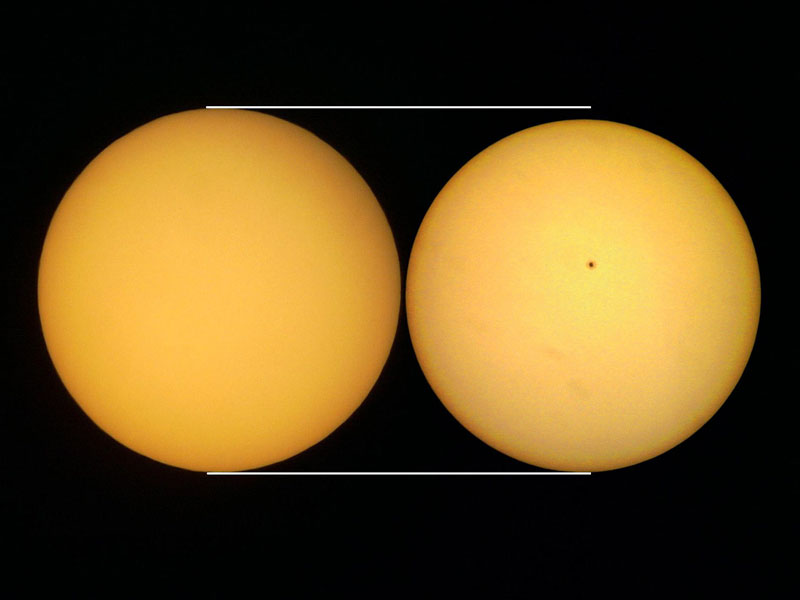
|
Credit: Enrique Luque Cervigón
(The Superspace)
Explanation:
When is the Sun most distant from Earth?
It happened again
just this past weekend.
A common misconception is that the Sun is most distant during
the winter, when it's the coldest.
In truth, however, the
seasonal temperatures
are more
greatly
influenced
by the number of daylight hours and how high the Sun rises.
For example, during northern winter, the tilt of the Earth causes the
Sun to be above the horizon for a
shorter time and remain lower in the sky than in northern summer.
The picture
compares the
relative size of the Sun during Earth's closest approach in
January (northern winter) on the left,
and in July (northern summer) on the right.
The angular size of the Sun is
noticeably smaller during July, when it is farther away.
If the Earth's orbit
was perfectly circular,
the Sun would always appear to be the same size.
These two solar images
were taken from
Spain during 2006,
but the same effect can be seen in any year from any
Earth-bound location.
|
January February March April May June July August September October November December |
| |||||||||||||||||||||||||||||||||||||||||||||||||||||||
NASA Web Site Statements, Warnings, and Disclaimers
NASA Official: Jay Norris. Specific rights apply.
A service of: LHEA at NASA / GSFC
& Michigan Tech. U.
Based on Astronomy Picture
Of the Day
Publications with keywords: Sun - distance
Publications with words: Sun - distance
See also:
